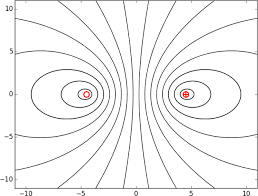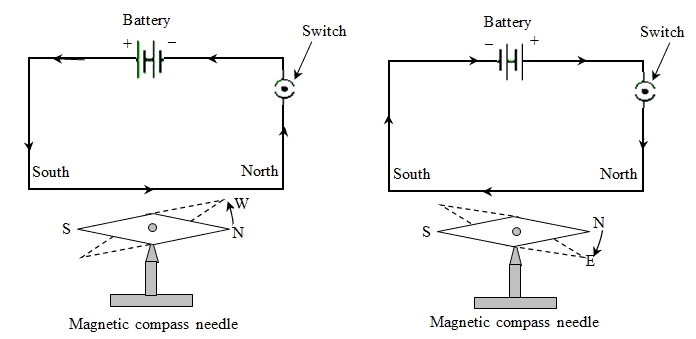The magnetic field describes the influence of electrical charges in magnetized material and relevant motion. A magnetic field can only be generated when the electrons move through the electrical conductor. The geometric shapes of flux are produced by moving electric current through the shapes which are similar in the electrostatic field. There are many ways for the illustration of the magnetic field. The magnetic field is mathematically drawn as vector field and vector field is drawn as a set of many vectors on a grid. An alternative way to describe the magnetic field is the use of field lines in the magnetic field. We distribute with grid pattern and smooth lines are connected with the vectors.

Properties of field lines
The field lines have some powerful properties which describe that
- Magnetic field lines can never cross each other.
- Magnetic field lines are grouped where the field lines are strongest. This means that the strength of field lines can be indicated by the density of fields.
- Magnetic field lines never stop because they always make the close loops which continue inside the magnetic field.
- The magnetic field requires the arrowheads to indicate the direction of the field. The lines are labeled with N and S to represent the North and south respectively.
- For the visualization of arrow fields in the real world use the iron filings which are dropped on the surface near the magnetic. Every filing act like the tiny magnetic with the North and South Pole. The exact density of the fillings depends upon the filings’ size and magnetic properties.
Oersted’s experiment
H.C Oersted in 1820 experimented to discover the magnetic effect of current. He discovered the flow of current through a conductor that produces the magnetic field around it. The following example discovers the magnetic effect of current.
Firstly, we make a simple electric circuit by joining the straight line with a battery and a plug. Take a magnetic compass needle put to the wire straight parallel to and over the needle. The switch is connected to shoe the flow of current parallel to south and north directions.

This will show the North Pole of a compass needle which is deflected towards the West. If the direction of the current is reversed then the North Pole of the compass is deflected towards the west. The direction of deflection can be easily determined by the SNOW rule. This rule shows that when the current flow through the conductor then the North Pole of the needle is deflected towards the West.